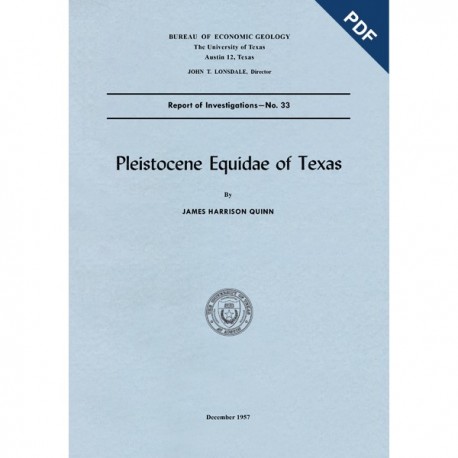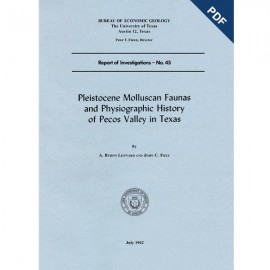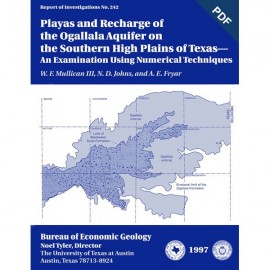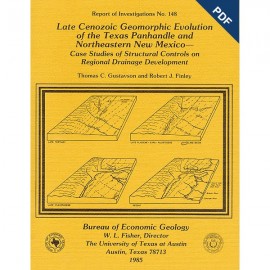Reports of Investigations
-
Books & Reports
- Reports of Investigations
- Guidebooks
- Udden Series
- Geological Circulars
- Down To Earth
- Atlases of Major Oil and Gas Reservoirs
- Texas Memorial Museum Publications
- Environmental Geologic Atlas of the Texas Coastal Zone
- Mineral Resource Circulars
- Other Reports
- Seminars and Workshops
- Handbooks
- Submerged Lands of Texas
- Symposia
- Annual Reports
- Open File Reports
-
Maps & Cross Sections
- Thematic Maps
- Miscellaneous Maps, Charts & Sections
- Geologic Atlas of Texas
- STATEMAP Project Maps
- Geologic Quadrangle Maps
- Cross Sections
- Highway Geology Map
- Energy and Mineral Resource Maps
- Shoreline Change and Other Posters
- Wilcox Group, East Texas, Geological / Hydrological Folios
- Bouguer Gravity Atlas of Texas
- River Basin Regional Studies
- Featured Maps
- Posters
- Teachers & the Public
-
Geological Society Publications
- Gulf Coast Association of Geological Societies
- Alabama Geological Society
- Austin Geological Society
- Corpus Christi Geological Society
- Houston Geological Society
- Lafayette Geological Society
- Mississippi Geological Society
- New Orleans Geological Society
- South Texas Geological Society
- GCS SEPM Publications
- Historic BEG & UT Series

Pleistocene Equidae of Texas. Digital Download
RI0033D
A free, digital version of this publication can be found on: Texas ScholarWorks
To purchase a print version (if available): RI0033
RI0033D. Pleistocene Equidae of Texas, by J. H. Quinn. 51 p., 1 figure, 7 pls., 1957. doi.org/10.23867/RI0033D. Downloadable PDF.
To purchase this publication in book format, please order RI0033.
Excerpted from the ABSTRACT
Pleistocene-age fossil horses of Texas belong to at least three faunal assemblages. The oldest contains Hippotigris (= Plesippus) which disappeared before Yarmouthian time. The second contains Equus scotti and Onager semiplicatus (= Equus (Asinus) calobatus) which disappeared before Sangamon time. Both these groups are found on the High Plains but not on the Coastal Plain or along the central Texas rivers, where a later fauna, probably of Sangamon age, is found which contains remains of Equus, Asinus, and Onager but no Hippotigris. The Texas Onager material is referable to the Asiatic group and in addition to O. semiplicatus contains O. lambei, O. littoralis, O. fraternus, O. complicatus, and others; one new form is described herein.
Post-Pleistocene horses of the Texas High Plains region contain Equus caballus, both the draft and pony-horse types. These are treated as subspecies, Equus c. caballus for the larger and Equus c. laurentius for the smaller form. E. laurentius was described by Hay (1913a) and the type has subsequently been considered a“feral” horse that somehow became fossilized. It seems doubtful that fossilization could have taken place in less than 400 years, the maximum time available for a “feral” horse. Also, E. laurentius is inseparable from E. niobrarensis alaskae and the Texas materials. Two new species are described, five species are transferred to Onager, and additional species are reconsidered.
Keywords: Pleistocene, High Plains, Texas, fossils, horses
Citation
Quinn, J. H., 1957, Pleistocene Equidae of Texas: The University of Texas at Austin, Bureau of Economic Geology, Report of Investigations No. 33, 51 p.




